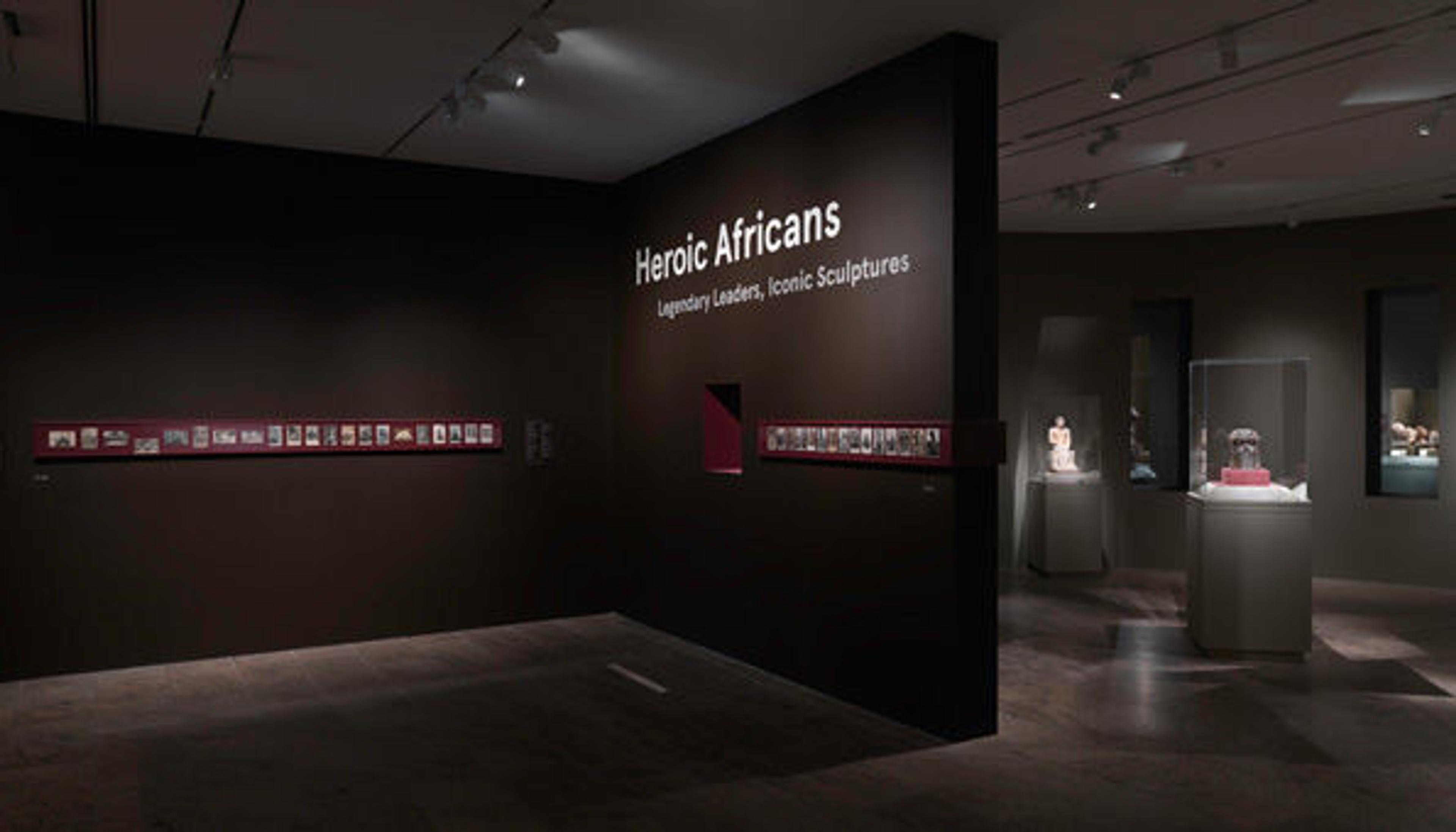«When I joined the Metropolitan's Exhibitions Office, I could not have imagined the immensity of the work that goes into the exhibitions program. It can take up to five years for an exhibition to turn from a proposal into an installation and involve hundreds of workers across the Museum. In this post, I hope to answer the questions about the exhibitions process that I always had while roaming the galleries as a visitor.»
Entrance gallery of the current exhibition Heroic Africans: Legendary Leaders, Iconic Sculptures
Exhibitions at the Met are driven by our curators. They begin when a curator from one of the Met's seventeen curatorial departments presents a proposal to the Associate Director for Exhibitions and the Museum's Director. For major undertakings, this can happen three to five years in advance of the proposed opening date. Once the exhibition is approved, the curator draws up a full list of works that he or she would like to include in the show (there is no exhibition without the art). Large exhibitions often involve works from outside the Museum's collection, so the curator sends letters to museums and individuals requesting loans some two years in advance of the exhibition's opening.
The transportation of loaned works from other institutions and individuals to the Museum is the work of the Registrar's Office, which coordinates the logistics of getting these valuable (often very large) objects in and out of the building safely. Works of art are often couriered; a Museum staff member travels with the work to guarantee its safe transport and installation.
Once loaned objects arrive at the Museum, the conservation departments perform condition checks to ensure that the pieces are able to go on view. Some works undergo cleaning, repair, or structural support before display.
A conservator in the Museum's Paintings Conservation Department examines The Houses of Parliament (Effect of Fog) by Claude Monet
If there is a catalogue planned for the exhibition, the curator works with one of the Met's in-house editors to produce it. Nearly as important as the exhibition itself, the catalogue serves as the main record of an exhibition for future scholars, those who could not see the works in person, and enthusiasts of handsome art books.
The Met's in-house exhibition designers work with the curator on the installation plans. The design of an exhibition is, of course, crucial to its meaning: the color of the walls affects the look of the objects, and the flow of the galleries demonstrates how the objects relate to each other.
Exhibitions are costly beasts, so each one needs financial support. The Development Office seeks outside funding for the exhibition from individuals, foundations, and corporations.
The Education Department organizes a variety of public programs such as gallery talks, lectures, and Sundays at the Met that complement the exhibition's content.
Merchandise consults with the curator to create products related to the exhibition. These range from posters and office supplies to three-dimensional works like the now-famous miniature "armadillo shoes" for the Alexander McQueen: Savage Beauty exhibition.
Our Communications Department coordinates press releases and publicity. The press is one of the primary means through which the public hears about exhibitions and decides whether to see them.
The Digital Media Department creates videos and related media for the website and the exhibition's galleries. For instance, Digital Media made the Met's first app in connection with the recent exhibition Guitar Heroes: Legendary Craftsmen from Italy to New York.
Screenshots from the Met Guitars app produced in conjunction with the exhibition Guitar Heroes: Legendary Craftsmen from Italy to New York
And the exhibition opens. It is rare for an exhibition to be on view for more than three or four months—a surprisingly quick run after the two-plus years of preparation. Institutions do not want to lend their great works for too long, and exhibitions often travel to other institutions after they leave the Met.
In its diversity and scale, the Metropolitan's exhibitions program is among the most ambitious in the world. There are several major exhibitions on display at once, not counting in-house rotations and small exhibitions, and the full exhibition calendar means that our designers and technicians install or dismantle an exhibition almost every week.
In planning the schedule, the Exhibitions Office tries to ensure a balance between attention-grabbing popular exhibitions and smaller, quieter shows. I often hear from people how difficult it is to see all the exhibitions at the Met, but that seems a welcome complaint.
Visitors often think of the Met as unchanging, but in a way it is a different museum every time you visit. Exhibitions allow us to display loans alongside our permanent collection to create new contexts and juxtapositions in a constantly evolving narrative of art.
Related Link
Exhibitions
